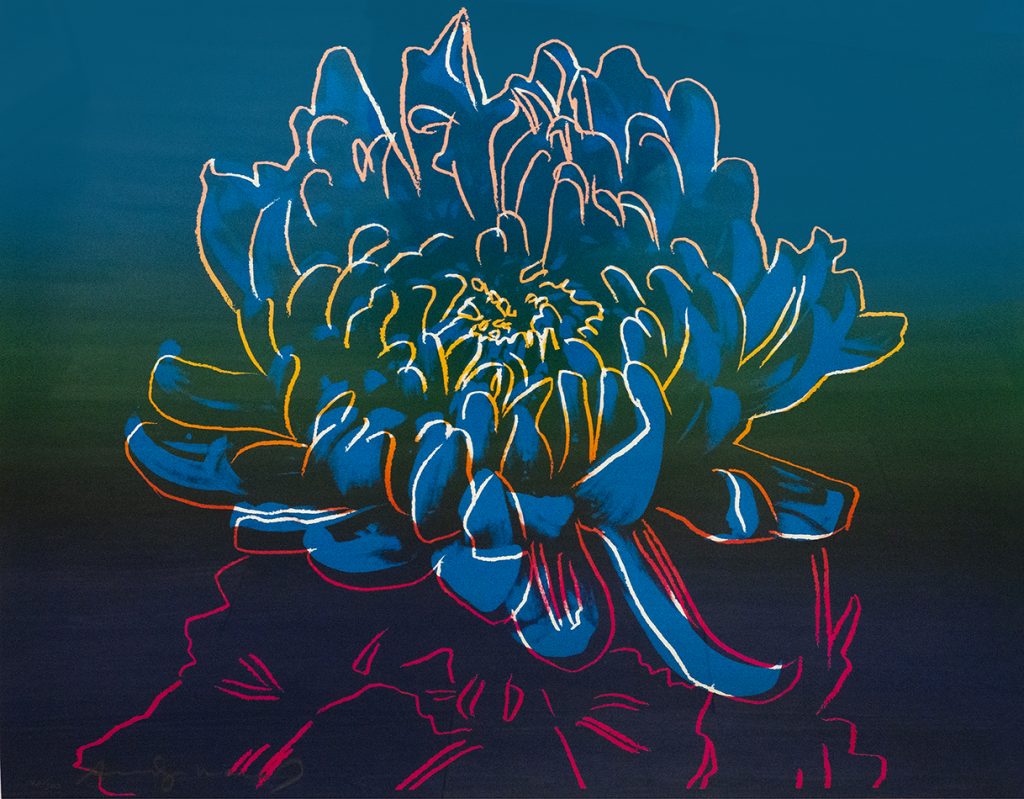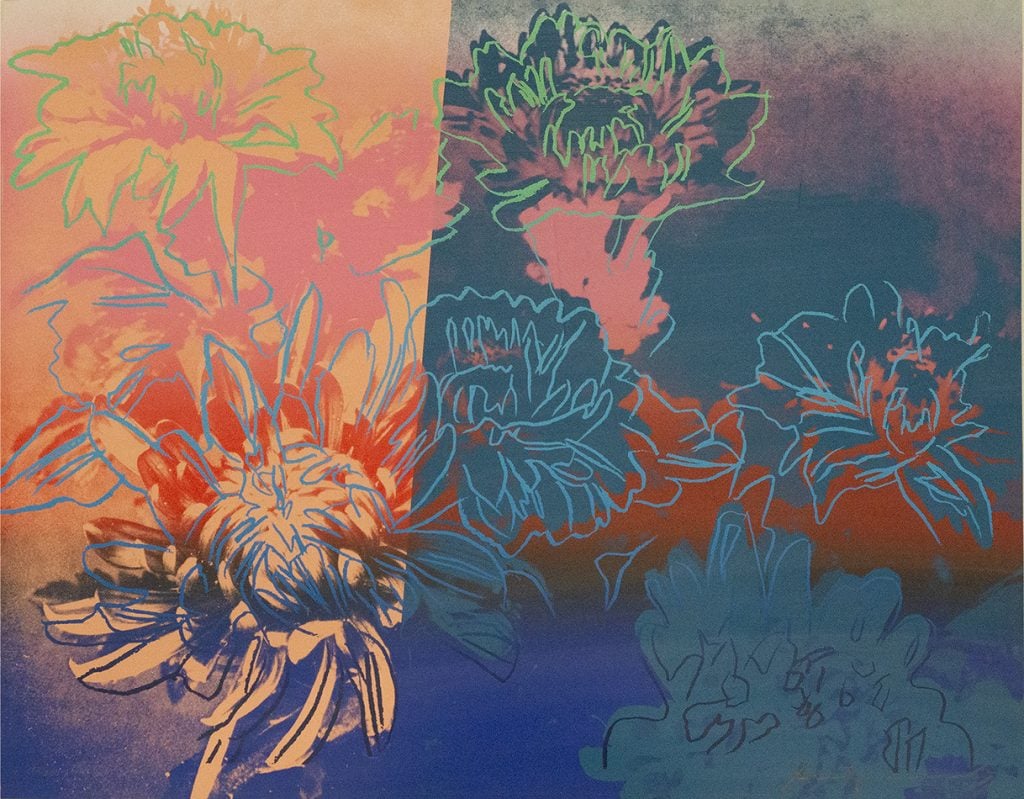Gallery Network
Spotlight: How Andy Warhol’s Chrysanthemum Prints Celebrated Japanese Culture
Warhol's "Kiku" series consisted of 300 screenprint portfolios of the flower.

Warhol's "Kiku" series consisted of 300 screenprint portfolios of the flower.

Artnet Gallery Network

Every month, hundreds of galleries showcase new exhibitions on the Artnet Gallery Network—and every week, we shine a spotlight on the exhibitions we think you should see. Check out what we have in store, and inquire more with one simple click.
What You Need to Know: Though his Marilyns and Campbell Soup Cans are certainly more famous, Andy Warhol loved a floral motif, too, having once remarked, “I always notice flowers.” He returned to the subject matter repeatedly, including in his colorful “Flower” works, a “Poinsettias” series from the early 1980s, as well as his 1983 “Kiku” series of chrysanthemums (Kiku is the Japanese name for the flower). Warhol visited Japan twice in his lifetime, first in 1956, during a trip around the world, and then in 1974 for a solo exhibition at the Daimaru Department Store. In 1983, Fujio Watanuki, a champion of the Japanese avant-garde and founder of the Gendai Hanga Center in Tokyo, approached Warhol about creating a body of work inspired by chrysanthemums. In total for the “Kiku” series, Warhol created 300 screenprint portfolios with three prints in each. Shapero Modern, London’s go-to gallery for art prints and multiples, is currently offering three works from the “Kiku” series.
Why We Like It: Warhol’s “Kiku” works are intimate in scale, made with the traditional size of Japanese living spaces in mind, and in that sense unique to Warhol’s oeuvre. Made in electric shares of oranges, blues, reds, and greens, the prints are eye-catching and elegant at once, at times looking like bursts of fireworks. While maintaining his Pop aesthetic, the works are also deeply symbolic: the chrysanthemum is an age-old symbol of the Japanese emperor and imperial house (it’s printed on Japanese passports), and also represents longevity, rejuvenation, and the autumn season.
What the Gallery Says: “This body of work demonstrates the global influence of Warhol and his popularity with Japanese collectors. In “Kiku,” the artist appealed directly to his audience with his subject matter. These bold yet delicate images are luminescent examples of his skill as a printmaker and colorist. With “Kiku,” Warhol produced a stunning set of images that are striking in their elegance. Characterized by crisp vivid color and layered forms, the portfolio retains its dynamism and impact even 35 years after its creation. Combining both abstraction and a naturalism that describes the flower’s form, the series is a poetic representation of a flower, layered with symbolic meaning.”

Andy Warhol, Kiku (1983). Courtesy of Shapero Modern.

Andy Warhol, Kiku (1983). Courtesy of Shapero Modern.

Andy Warhol, Kiku (1983). Courtesy of Shapero Modern.